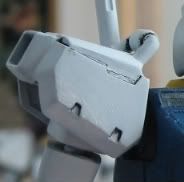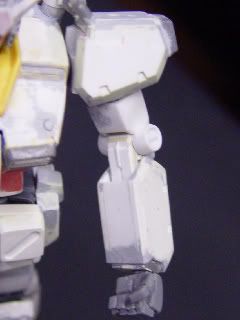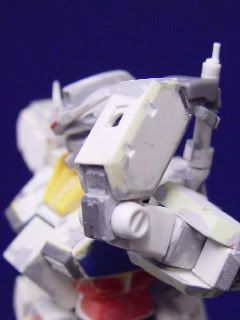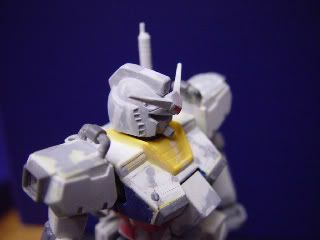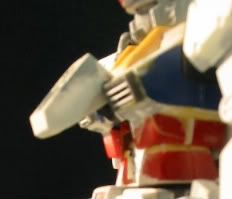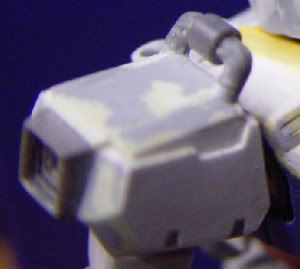
The bar across the shoulder are made from two plastic sprues with right angles glued onto the two ends of a Kotobukya mobile pipe. I typically keep the sprues of kotobukiya option parts. They are 2mm, thinner than most of the sprues on the runners of a Bandai kits.
The most important piece in the shoulder is the part connecting the two panels. It must be wide enough to accept the shoulder joint. The stock shoulder joints of the RX-78 kit has two knobs that would made the shoulder too wide so I cut them out. As you can see, spacing is again very tight because of the solid panels. Flare between the shoulder panels allows some mobility of the arm without moving the shoulder. This is handy in making natural standing action poses.
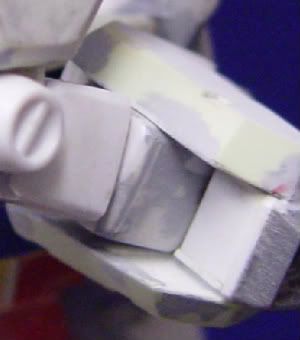
The hole that allows the shoulder peg to go through defines the relative height of the shoulders above the chest block. Some mock placement of the shoulder panel with the chest block will give you a good idea of where to drill the peg hole.
